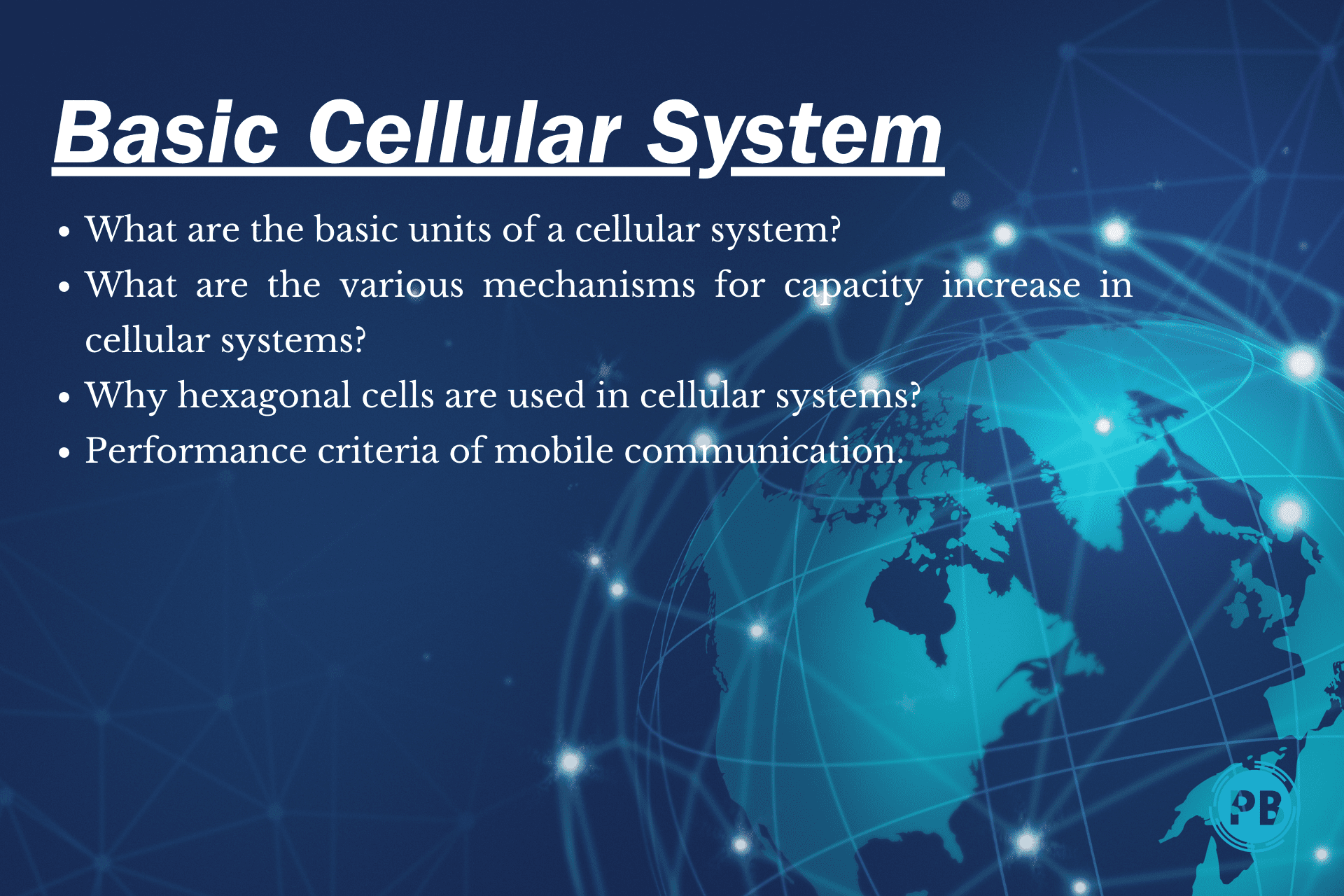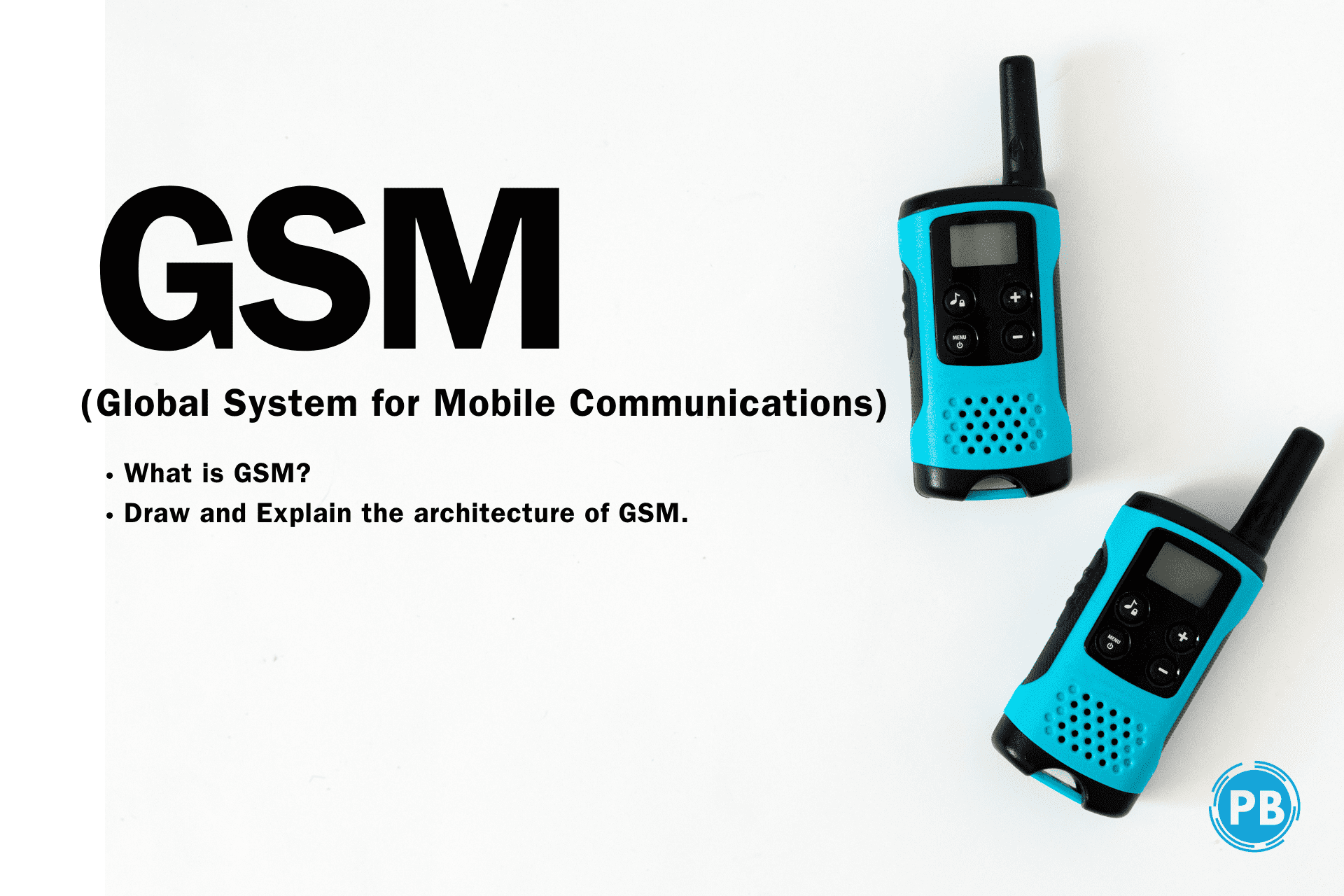
Cell Splitting and its Techniques
In this blog, we are going to cover an important topic of cellular and mobile communication. These are the following topics we going to cover in this blog.
- What is the primary purpose of cell splitting in Cellular and Mobile Communication?
- what are the various techniques of cell splitting in Cellular and Mobile Communication?
- Describe the process of cell splitting, segmentation, and dualization?
(i) What is the primary purpose of cell splitting in Cellular and Mobile Communication?
The purpose of cell splitting is to increase the channel capacity and improve the availability and reliability of a cellular telephone network. The point when a cell reaches maximum capacity occurs when a number of subscribers wishing to place a call at any given time equals the number of channels in the cell.
Splitting cell Cell areas creates new cells, providing Original an increase in the degree of frequency reuse, thus increasing the channel capacity of a cellular network. Generally, the new cell radius is one-half the original radius. This can be seen in the figure.

(a) the original cell site is not used, whereas in Fig.
(b) it is used
Radius of new cell = Radius of old cell / 2
Area of new cell = Area of old cell / 4
It is assumed that every new cell carries the same maximum traffic load as the old cell. Then, we have -
New traffic load / Unit area = 4 x Traffic load / Unit area
(ii) what are the various techniques of cell splitting in Cellular and Mobile Communication?
The cell-splitting methods are of two types as given below -
(i) Permanent Splitting
(ii) Dynamic Splitting
(i) Permanent Splitting - Installation of each new split cell has to be planned ahead of time. The allocated frequencies, the transmitted power, the number of channels, the choice of the cell-site selection, and the traffic load consideration should all be assumed.
If ready, the actual service cut-over must be set at the lowest traffic point, generally at midnight on a weekend. Only a few calls are dropped hopefully due to this cut-over, considering that the downtime of the system is within 2h. A tough job is the selection of small cell sites.
The antenna is placed on a monopole or erected with a mastless arrangement. However, during a low-traffic period, these splittings are easy to manage as long as the cut-over from large cells to small cells occurs. The assignment of frequency must follow the rule dependent on the frequency-reuse distance ratio q with the power maintained.

(ii) Dynamic Splitting - Dynamic splitting is dependent upon utilizing the assigned spectrum efficiency in real-time. Since it cannot be afforded to have one single cell unused during cell splitting at heavy traffic hours, the algorithm for dynamically splitting cell sites is a tough job.
To prevent dropped calls, the cell splitting should proceed gradually over a cellular operating system. The cell splitting procedure should be easy to manage, with a software algorithm program.
Let us consider that the area exactly midway between two old 2A sectors needs maximized traffic capacity as shown in Fig. The midpoint is taken between two old 2A sectors and denoted it 'new 2A'. The new 1A sector is ie determined by rotating the old 1A-2A line clockwise 120° as shown in Fig.
Then the implementation of the new set of seven split cells can be found. d. Let us consider that the channel assigned in the old 2A sector separated into two groups, to provide service for ongoing calls while doing the cell splitting.
2A=(2A)' + (2A)" ....(i)
where (2A)' is the frequency channels used in both new and old cells and (2A)" is the frequency channels used only in the old cells.
Only a few channels are in (2A)' at the early splitting stage. More channels will be shifted gradually from (2A)" to (2A)'. The cell splitting technique will be completed if no channels remain in (2A)".
(iii) Describe the process of cell splitting, segmentation, and dualization?
Process of Segmentation and Dualization - These techniques are incorporated when extra cells are needed within the reuse distance Segmentation divides a channel group into smaller groupings or segments of mutually exclusive frequency, cell sites that are within the reuse distance are allocated their self-segment of the channel group. Segmentation is a means of avoiding co-channel interference, although it lowers the capacity of a cell by enabling reuse inside the reuse distance, which is normally prohibited.
Dualization refers to avoiding full cell splitting where the whole area would otherwise require to be segmented into smaller cells. When a new cell is set requiring the same channel group as an existing cell and a second cell is not sufficiently for from cell 1 for normal reuse, the busy part of cell I is converted to a primary cell, and the same channel frequencies can be allocated to the new competing cell.
When all available channels require to be used in cell 2 a problem would arise because the larger secondary cell in cell 1 uses some of these and there would be interference.
Conclusion -
As we conclude our journey into the captivating world of cell splitting and its various techniques, we hope to have ignited your curiosity about the intricacies that govern life at the cellular level. It is a very important concept in cellular and mobile communication. I hope you enjoy the blog that it helps you improve your knowledge and that you find it useful.
Thank You.
Do you dream of turning your thoughts and words into income ? join us now and become blogger now.



0 Comments
Leave a Comment